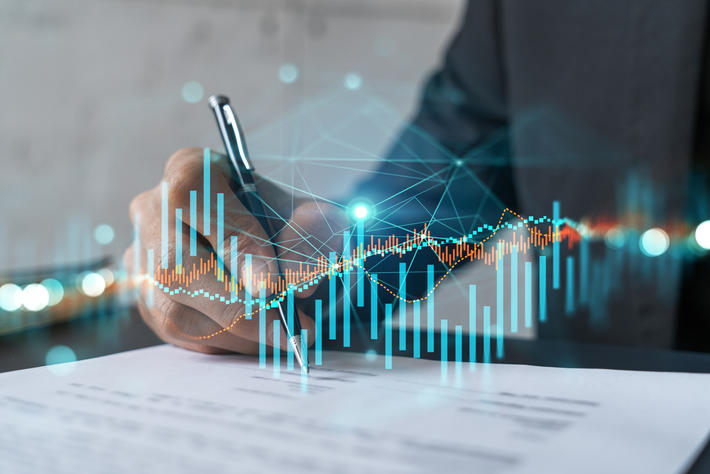
The trend of the aluminum market in 2021
2021 was an exceptional year for commodities, and the prices of non-ferrous metals listed on the LME were no exception, gaining 35%. The prices of copper and tin have set an all-time record, while the price of aluminum and zinc has marked the highest in 14 years.
Aluminum had the second best performance among the main industrial metals, a fact that is easily understood by looking at what happened in China, the largest producer and consumer of aluminum.
Last year, global primary aluminum production hit a record 67.3 million tons, with all growth concentrated in the first part of the year. Indeed, the combination of the Chinese government's environmental policies, involving limitations on the production of primary metal (largely produced using coal energy) and the onset of a major energy crisis in China, have led to a steady reduction in production capacity. Of the Asian giant, which continued into 2021, so that the country became a net importer of crude oil, with Chinese imports of primary aluminum amounting to 1.5 million tons in the first 11 months of 2021, with a 60% increase on a basis yearly.
Moreover, the decrease in production capacity worldwide was accompanied by a constant increase in demand for aluminum, also thanks to a strong recovery in consumption in Western markets, largely supported by public incentives.
The reduction in production, accompanied by the increase in consumption, has evidently eroded the stocks in the LME warehouses. The worsening of the scarcity of raw materials available to consumers, especially in Europe and the United States (more than 90% of stock market stocks are located in Asia and therefore more easily available for China and Japan) has been aggravated by a further narrowing of the bottlenecks in the logistics sector, which has led to a real lack of supply at a global level: the Bloomberg indicator of the "supply constraint" (data at the end of 2021) for the American market runs at the same levels highs of the last 20 years, indicating a very high state of shock in the production system and similar situations are also evident in Europe. Disposing of such "traffic jams" takes time; in the meantime, the cost of goods rises and the extent of the problem increases for those sectors most dependent on external deliveries. This is the case of the textile and metal sectors, up to and including those of electrical material, computers and motor vehicles.
Substantially therefore, decreasing production, rising demand and bottlenecks in transport have resulted in a sharp increase in the LME price and premiums for primary aluminum during 2021. The surge in energy prices Starting from the last quarter of 2021, new situations are registered on the market, the bottlenecks have become even more acute and no longer concern only the supply of raw materials, but also that of power.
The scenario sees an increasingly sustained inflation, costs for businesses continue to rise, some symptoms of possible impairment of economic growth are perceived: for 2022, therefore, an increasingly broad scenario of uncertainties is emerging. At the beginning of the fourth quarter of 2021, energy problems from China spread quickly to Europe; in a year marked by the production from renewable energies below expectations (the winds of the North Sea were calmer than in the past), by the gradual closure of nuclear reactors in Germany, with some French nuclear plants under maintenance, Europe it suddenly found itself having to compete with Asia in the supply of fossil fuels.
The prices for energy have risen violently and have reached levels so high as to endanger the most energy-intensive productions, including that of aluminum. It is estimated that to date in Europe the production of about 800,000 tons of primary aluminum has been suspended, and that another 400,000 tons are at risk, so that the production deficit in Europe will increase from 3.5 to 4.2 million tons.
The growing tension in the supply chain is why the European duty premium paid on the LME cash price exploded from less than USD 300 per ton to USD 460 in December. In the same period, the LME quotation of the light metal rose from around USD 2600 to USD 3100 / ton.
After the trend of the aluminum market in 2021, a look at 2022
The scenario that opens up for the remainder of 2022 is characterized by the persistence of positive fundamentals, partly challenged by the emergence of potentially negative macroeconomic trends and by the persistence of uncertainty about the consequences of Covid on the markets.
2022 began with more restrictive monetary policies (the Fed has announced that it will raise the interest rate in 2022), in the context of rising inflation, with the forecast of a reduction in the growth rate of the global economy.
The specter of a new slowdown in the Chinese real estate market also remains, which alone accounts for about 30% of the GDP of the Asian giant. However, looking at non-ferrous metals, and aluminum in particular, we have several important signs to reflect on: for much of 2022, bottlenecks in logistics and supply chains may persist, stocks of raw materials will remain low, attention to environmental policies for decarbonisation and support for “green metals”, including scrap, will lead to an increase in production costs, while the auto sector, held back by the problem of semiconductor supply, may show signs of improvement.
Source: A&L Aluminum Alloys Pressure Diecasting Foundry Tecniques


